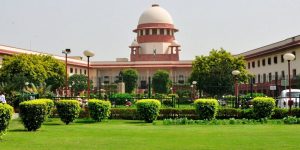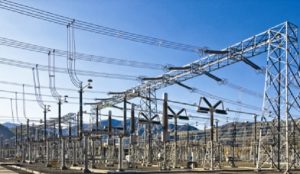“What a Constitution does is to give the people a government and to protect the same people from the same government”
This article expounds on the most important instrument the constitution provides to protect the people from the government: The Rights of Citizens and Communities. The Rights whether fundamental or otherwise are the cornerstones of individual liberty and dignity .More specifically; the Fundamental Rights under Part III of our constitution limits the powers of the legislature and the executive. They enable a “government of laws and not by men/women”. Thus these rights are bulwarks of constitutional government.
There is an emerging trend of emphasizing upon the Duties of citizens to the exclusion of their rights. The attempt to create a narrative of making these rights contingent upon the citizens performing their duties is based on a false premise. Because, the rights and duties are not two sides of the same coin and they are not situated in the same continuum. The citizens’ rights are not conditional on fulfilling the duties but are standalone. It means that whether the citizens carry out the duties or not, the rights would be available to them. Otherwise, citizens would be rendered a subject people like those of non democratic countries of Middle East, China, North Korea, Myanmar, etc.
There is also a demand being raised for balancing the Fundamental Rights and Fundamental Duties. Though the need for doing one’s duties towards society and polity must be stressed, the attempt to make Rights and Duties (Both Fundamental) correlative is highly problematic. A few important arguments in this regard are summarized below.
- Conflating duties of citizens with Fundamental duties (FD) are illogical because these are not the same. Duties can be legal, moral etc.
- The origin of the FDs does not give much confidence about the intention of the government. The product of an Emergency Era, these provisions were conceived in sin
.
- The constitution makers wanted the Fundamental Rights (FR) to act as the bulwark of citizens’ liberty and to protect it from being encroached upon by government. Thus Part III was enacted and because of their wisdom and commitment to freedom, these rights were not made conditional. That means enjoyment of these entitlements is not contingent upon citizen performing their duties whether fundamental or otherwise.
- Rights are claims against the State ( A political entity having sovereignty over a territory and governs the people within it through the machinery of government). State and government are not the source of the Rights. In general, rights are pre- State and in India also they are not post –State. Rather they are post-constitution. It means the FRs are not handouts of the State. The constitution is the source of rights not the State. Thus the State cannot and should not apply the Hobbesian or Hegelian logic and demand duties as pre conditions for exercising the Rights.
- When Gandhi philosophized about the duties, he surely would not have had the concept of FDs in mind. His notion of duties is not fundamental that they are to be enforced by the State through coercion. His idea of Oceanic Circle is rooted in the concept of autonomy, self governance and self control and here he categorically rejects any unnecessary restriction on individual freedom. So to use Gandhi to further the notion of FDs and make it conditional for Rights enjoyment is a disservice to His original thinking.
- Regarding the Judicial zeal towards enforced patriotism, one fails to understand how the apex court came to the conclusion that Indians are less patriotic( Recall the Supreme Court direction on the National Anthem) . The assumption that citizens should be taught patriotism. and patriotism should also be displayed presupposes a flawed understanding of Rights and Duties. Justice Cardoso has warned judges not to be knight errands running around with a whip to enforce their own moral world view. Apart from clear impracticality of implementation of such an ivory tower order, it also gave rise to vigilantism and police excesses on innocents. It’s highly demeaning and indignifying for us to be told by a Judge that we do not love our nation. The modification of the judgment reflects the sheer falsity of the order in the first place. Patriotism is a feeling of love towards ones nation and its people and not a displaying commodity.
- Hardly any functioning democracy in the world has the concept of FDs in their Constitution nor do they demand Citizens to conform to them for Rights enjoyment. True, totalitarian and dictatorship regimes do have them as these FDs can be used to hide their failure across all fronts and also as sledge hammers to curb dissent and critical voices.
- The very fact that these FDs are not enforceable by themselves shows they are not meant to be restrictions on citizens. The FDs are placed as appendage to Part IV not to Part III. This also emphasizes the high pedestal on which the Fundamental Rights are placed in the constitution.
- Even if we concede the importance of duties, the pertinent question would be what lies at the core of duties of citizen in a Constitutional Democracy? Democratic government is an accountable government. Public Accountability is the summum bonum of Indian polity. So the ” FD’ of the citizen should be relentless questioning of the powers that be. Eternal vigilance is the price of liberty. Thus citizens must seek answers from those exercising popular sovereignty and also from their attendant institutions.
- Even those running the government are citizens of this country. So the political executives and bureaucracy must also carry out the various duties including constitutional, legal, moral and other conventional duties. Unfortunately, their actions or inactions do not inspire much confidence. It’s highly idealistic to expect when the fish starts rotting from the head, the tail will remain immune and fresh.
- Finally, the ideals of Dharma have been integral to Indian ways of life from time immemorial. The Artha shastra explains the duties of the king towards the people and kingdom. Buddhist philosophies cast upon duties on individuals to find their own salvation. Duties towards family and community and the ideal of Karma have been expounded in Gita. Thus Indians have always been conscious of their duties even though these were not “Fundamental” or the government wanted them to be fulfilled by the people.
To conclude, Rights of citizens in a constitutional democracy should have precedence over Duties. This is a must for realizing the goal of rule of law, equality, freedom and justice. Simultaneously, we must be conscious of our duties arising out of different roles we perform. We carry out these duties and are also committed to them so are most of our country men and women. These duties are products of socialization, socio economic back grounds, education, political awareness, feeling of fraternity, role modeling, political culture etc. It is the ” opportunity and capacity to enjoy ones Fundamental Rights that make us capable and willing to be duty abiding and not vice versa.



